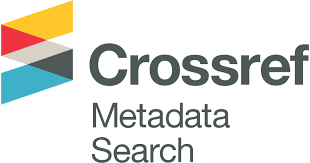Carbozone Compound Corrosion Inhibition Efficiency in Relation to Quantum Chemical Parameters: A QSAR Study for Predictive Models
DOI:
https://doi.org/10.58916/jhas.v8i5.91Keywords:
Corrosion inhibitors, QSAR models, Carbozone compounds, Quantum chemical parameters, Molecular dynamics.Abstract
This article discusses the use of carbozones compounds as corrosion inhibitors and the correlation between their quantum chemical parameters and molecular dynamic parameters with their corrosion inhibition efficiency. The results show that the use of a composite index of quantum parameters can accurately describe the corrosion inhibitory performance of carbozone molecules. A predictive QSAR model can be developed using the study's statistical methodologies to predict corrosion inhibitory behavior of organic compounds and generate new corrosion inhibitors. The inclusion of adsorption energy in the nonlinear equation assist decrease the number of descriptors utilized in the model. Overall, Researchers should focus more on these criteria in future research since they have the potential to enhance results.
Downloads
References
Ba-Abbad, M. M., Kadhum, A. A. H., Mohamad, A. B., Takriff, M. S., & Jalgham, R. (2012). Comparative study of the adsorption mechanism and photochemical oxidation of chlorophenols on a TiO2 nanocatalyst. International Journal of Electrochemical Science, 7(11), 11363-11376.
Dagdag, O., El Harfi, A., Cherkaoui, O., Safi, Z., Wazzan, N., Guo, L., Akpan, E., Verma, C., Ebenso, E., & Jalgham, R. T. (2019). Rheological, electrochemical, surface, DFT and molecular dynamics simulation studies on the anticorrosive properties of new epoxy monomer compound for steel in 1 M HCl solution. RSC advances, 9(8), 4454-4462.
Dagdag, O., El Harfi, A., El Gouri, M., Safi, Z., Jalgham, R. T., Wazzan, N., Verma, C., Ebenso, E., & Kumar, U. P. (2019). Anticorrosive properties of Hexa (3-methoxy propan-1, 2-diol) cyclotri-phosphazene compound for carbon steel in 3% NaCl medium: gravimetric, electrochemical, DFT and Monte Carlo simulation studies. Heliyon, 5(3), e01340.
Eddy, N. O., & Ita, B. I. (2011). QSAR, DFT and quantum chemical studies on the inhibition potentials of some carbozones for the corrosion of mild steel in HCl. Journal of molecular modeling, 17, 359-376.
El-Halabi, N. M., Abu-Awwad, F. M., & Morjan, R. Y. Research and Reviews: Journal of Chemistry.
Gece, G. (2008). The use of quantum chemical methods in corrosion inhibitor studies. Corrosion science, 50(11), 2981-2992.
Hermann, J., Schätzle, Z., & Noé, F. (2020). Deep-neural-network solution of the electronic Schrödinger equation. Nature Chemistry, 12(10), 891-897.
Jalgham, R. T. (2021). Theoretical, Monte Carlo simulations and QSAR studies on some triazole derivatives as corrosion inhibitors for mild steel in 1 M HCl. ES Energy & Environment, 13, 37-49.
Jalgham, R. T., Roymahapatra, G., Dash, M. K., Dagdag, O., & Guo, L. (2023). In Silico studies on Triazole Derivatives as Corrosion Inhibitors on Mild Steel in Acidic Media. ES Materials & Manufacturing, 21, 867.
Khaled, K. (2011). Modeling corrosion inhibition of iron in acid medium by genetic function approximation method: A QSAR model. Corrosion science, 53(11), 3457-3465.
Musa, A. Y., Jalgham, R. T., & Mohamad, A. B. (2012). Molecular dynamic and quantum chemical calculations for phthalazine derivatives as corrosion inhibitors of mild steel in 1 M HCl. Corrosion Science, 56, 176-183.
Musa, A. Y., Mohamad, A. B., Takriff, M. S., & Jalgham, R. T. (2012). Electrochemical and quantum chemical studies on phthalhydrazide as corrosion inhibitor for mild steel in 1 M HCl solution. Research on Chemical Intermediates, 38, 453-461.
Ouchenane, S., Jalgham, R., Rezgoune, S., & Roymahapatra, G. (2023). Electrochemical and Computational Study of Cysteine as a Green Corrosion Inhibitor of Mild Steel in Sulfuric Acid Medium. In Handbook of Research on Corrosion Sciences and Engineering (pp. 405-432). IGI Global.
Ouchenane, S., Jalgham, R. T., Rezgoun, S., Saifi, H., & Bououdina, M. (2021). Experimental and theoretical studies of the corrosion inhibition properties of 2 amino, 4–6-dimethylpyrimidine for mild steel in 0.5 M H2SO4. Chemistry Africa, 4(3), 621-633.
Quadri, T. W., Olasunkanmi, L. O., Fayemi, O. E., Akpan, E. D., Verma, C., Sherif, E.-S. M., Khaled, K. F., & Ebenso, E. E. (2021). Quantitative structure activity relationship and artificial neural network as vital tools in predicting coordination capabilities of organic compounds with metal surface: a review. Coordination Chemistry Reviews, 446, 214101.
Revie, R. W. (2008). Corrosion and corrosion control: an introduction to corrosion science and engineering. John Wiley & Sons.
Roberge, P. R. (2019). Handbook of corrosion engineering. McGraw-Hill Education.
Verma, C., Quraishi, M., & Ebenso, E. E. (2020). Quinoline and its derivatives as corrosion inhibitors: A review. Surfaces and Interfaces, 21, 100634.
Verma, J., Khedkar, V. M., & Coutinho, E. C. (2010). 3D-QSAR in drug design-a review. Current topics in medicinal chemistry, 10(1), 95-115.
Zaferani, S. H., Sharifi, M., Zaarei, D., & Shishesaz, M. R. (2013). Application of eco-friendly products as corrosion inhibitors for metals in acid pickling processes–A review. Journal of Environmental Chemical Engineering, 1(4), 652-657.















